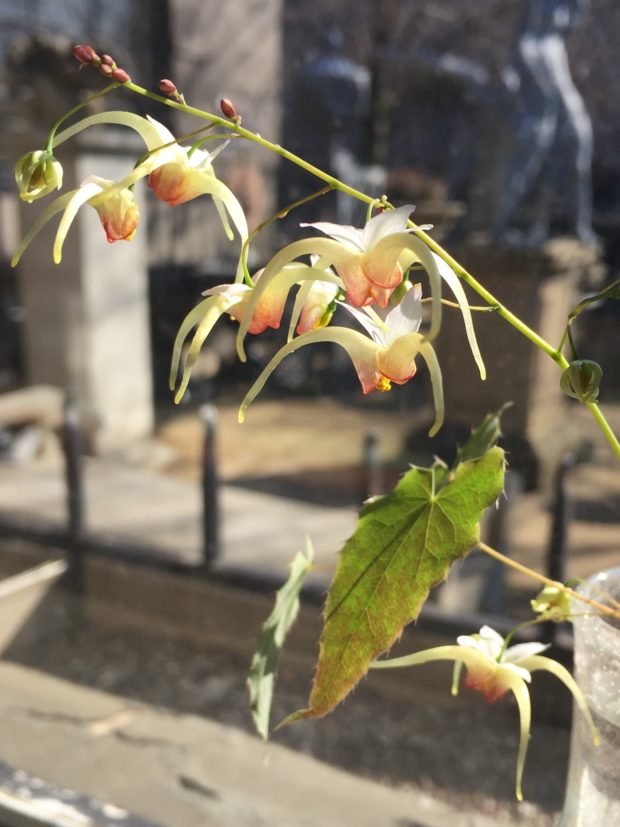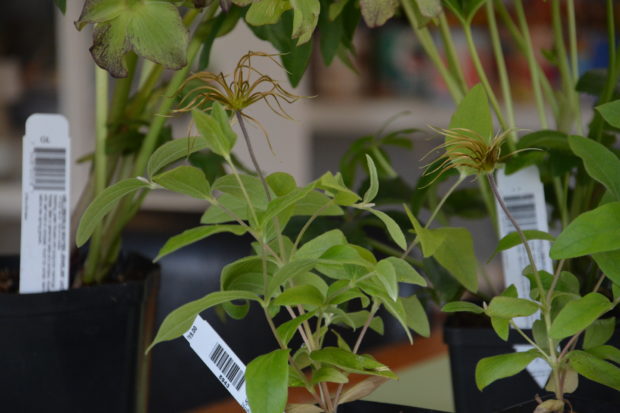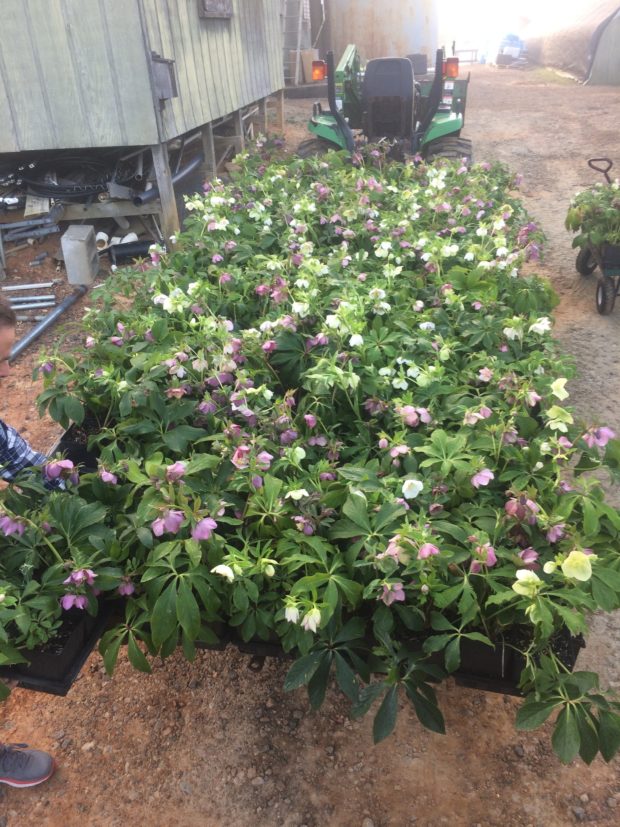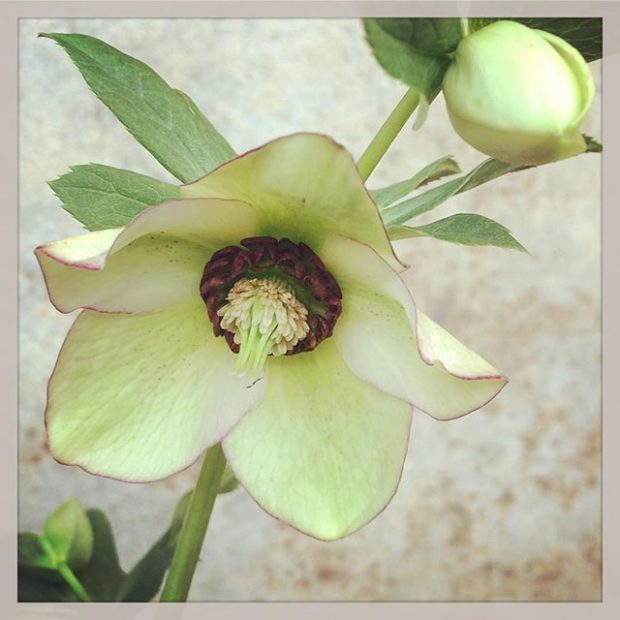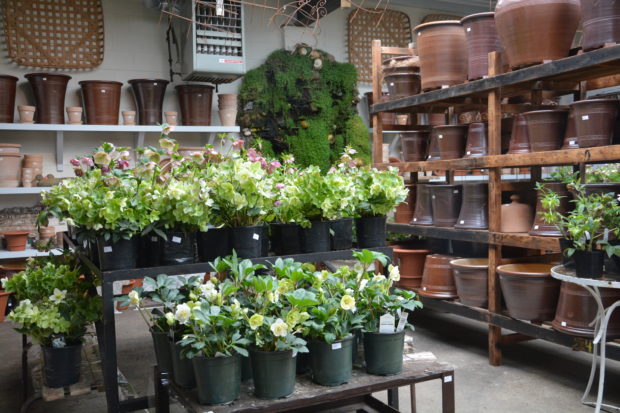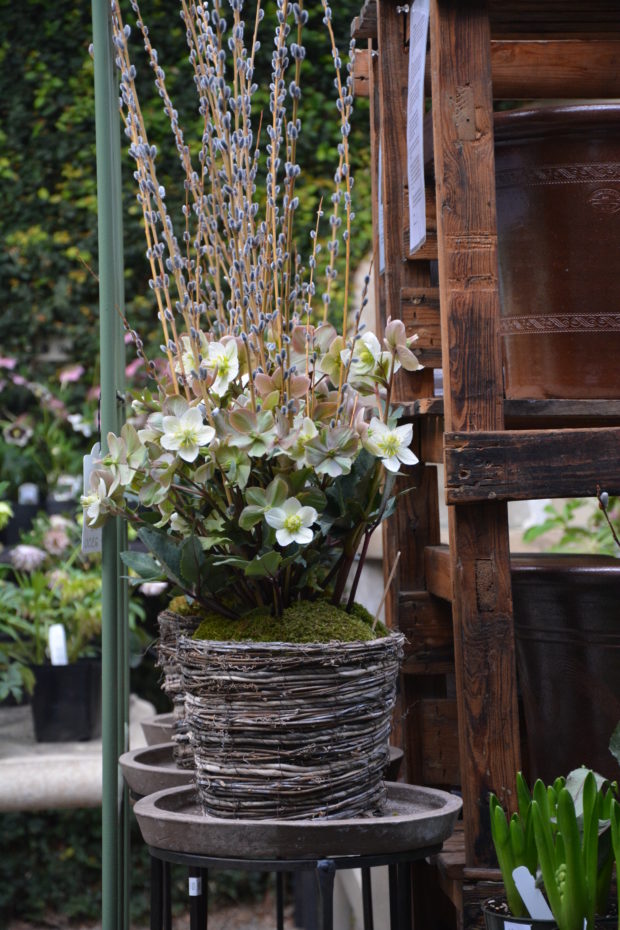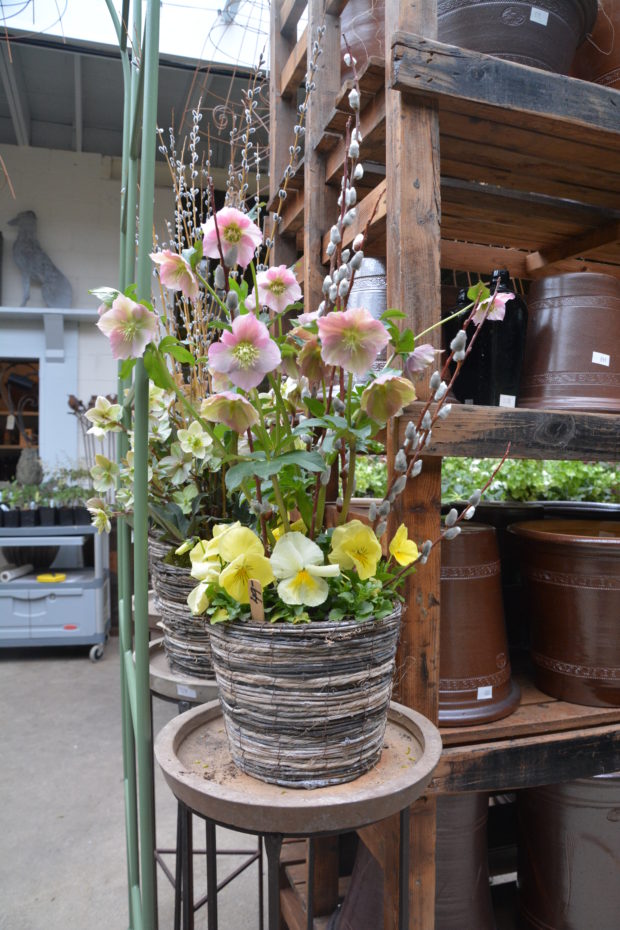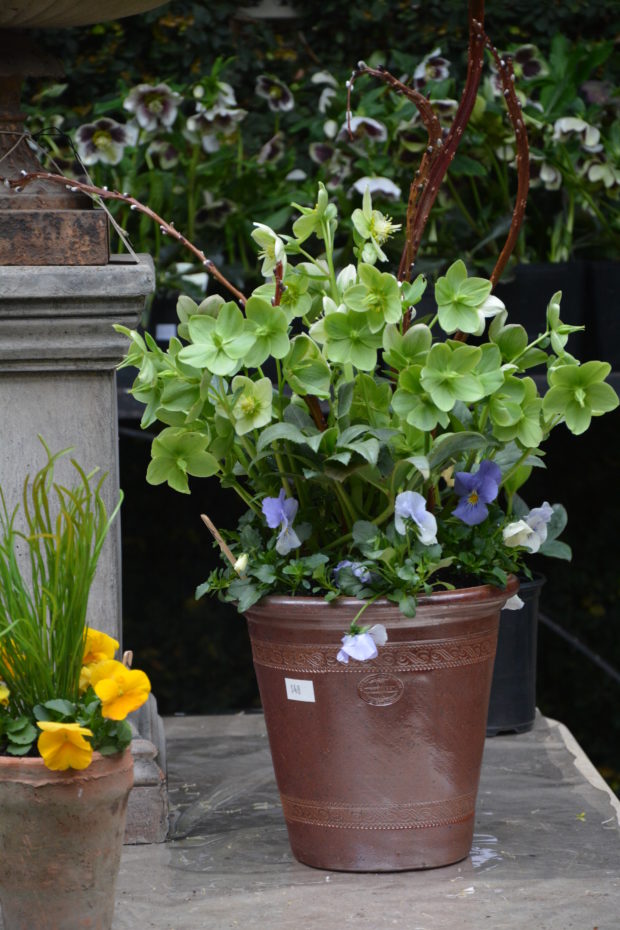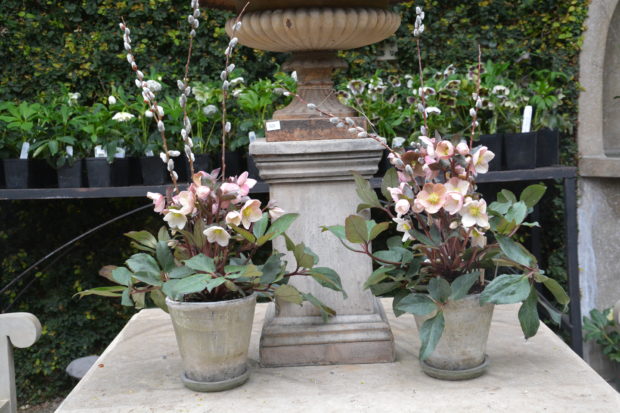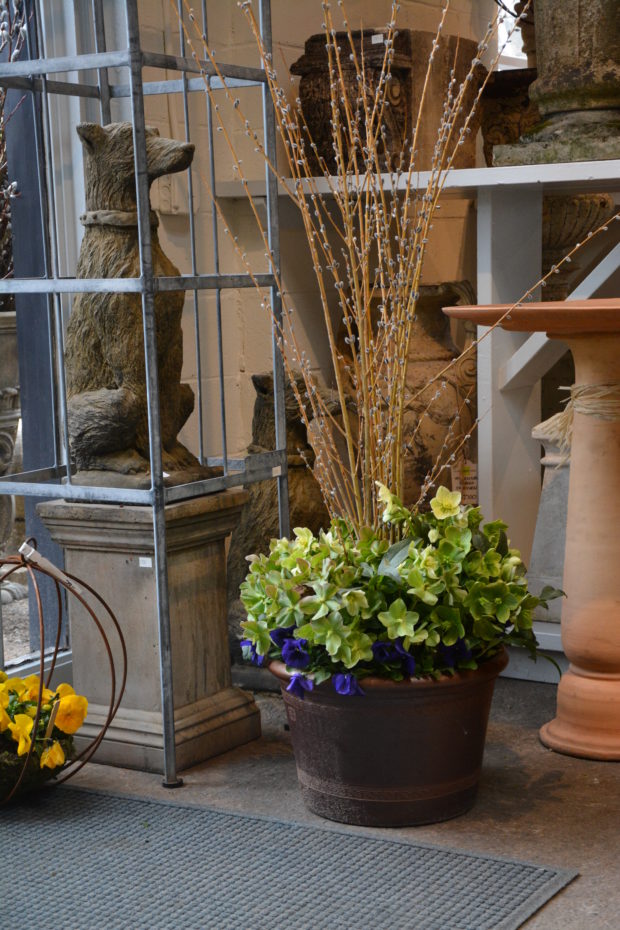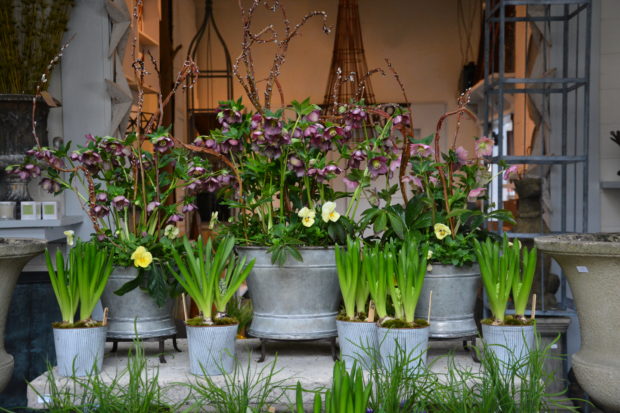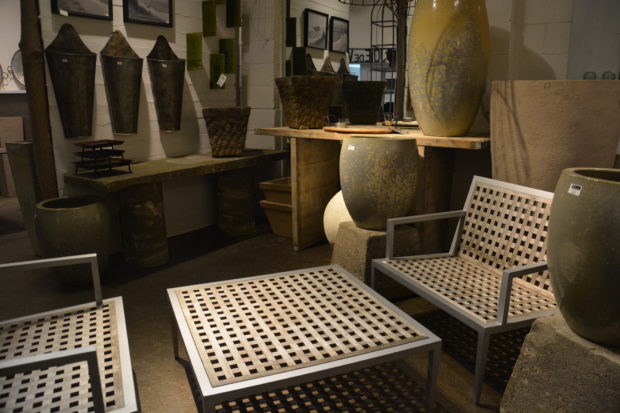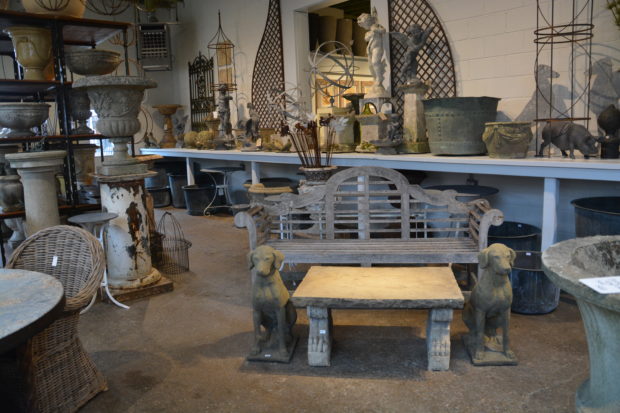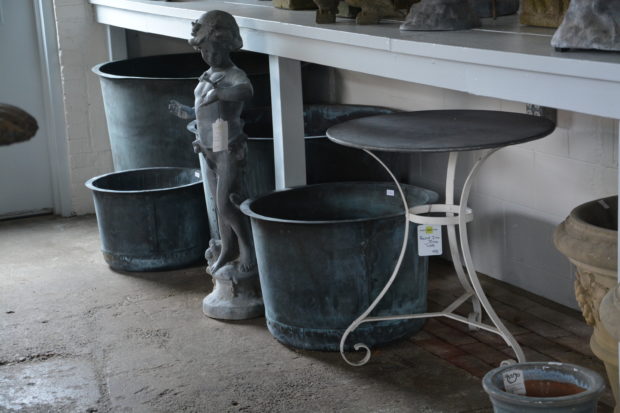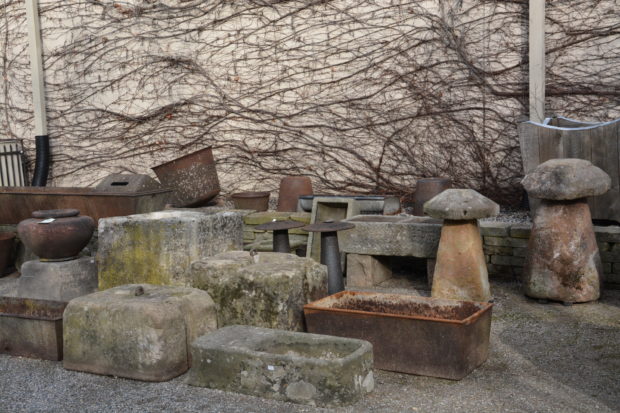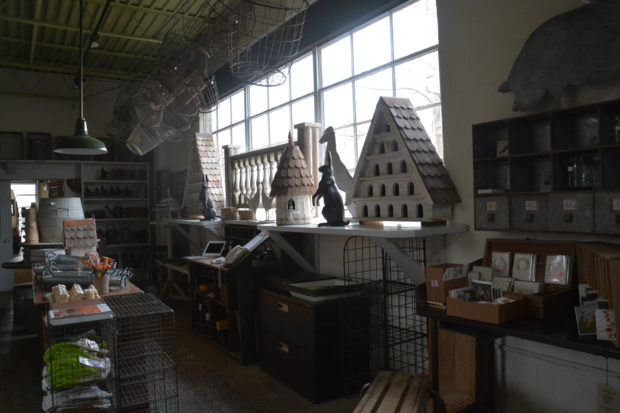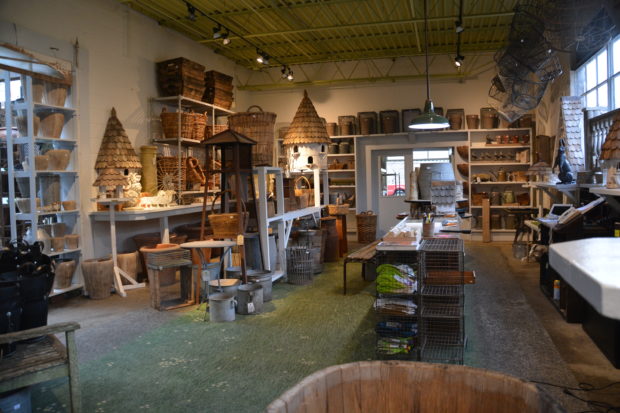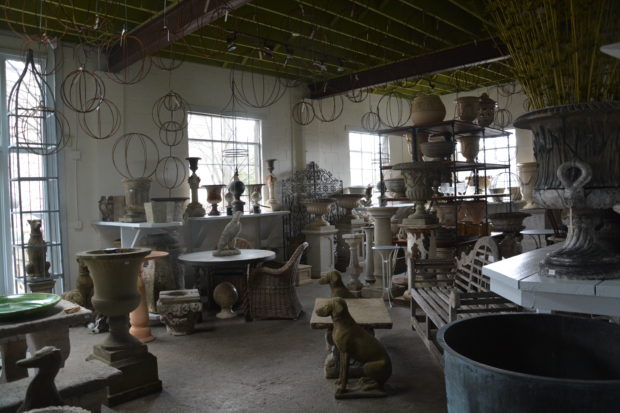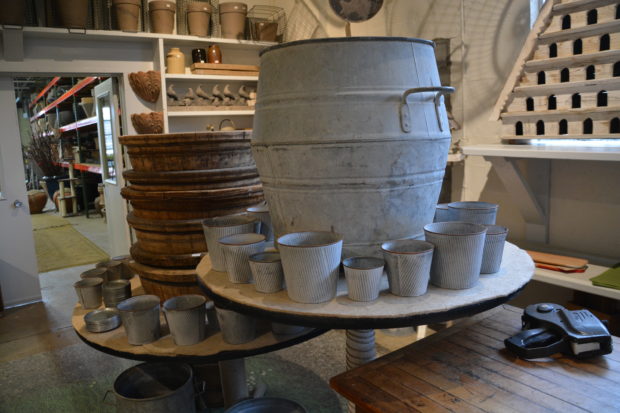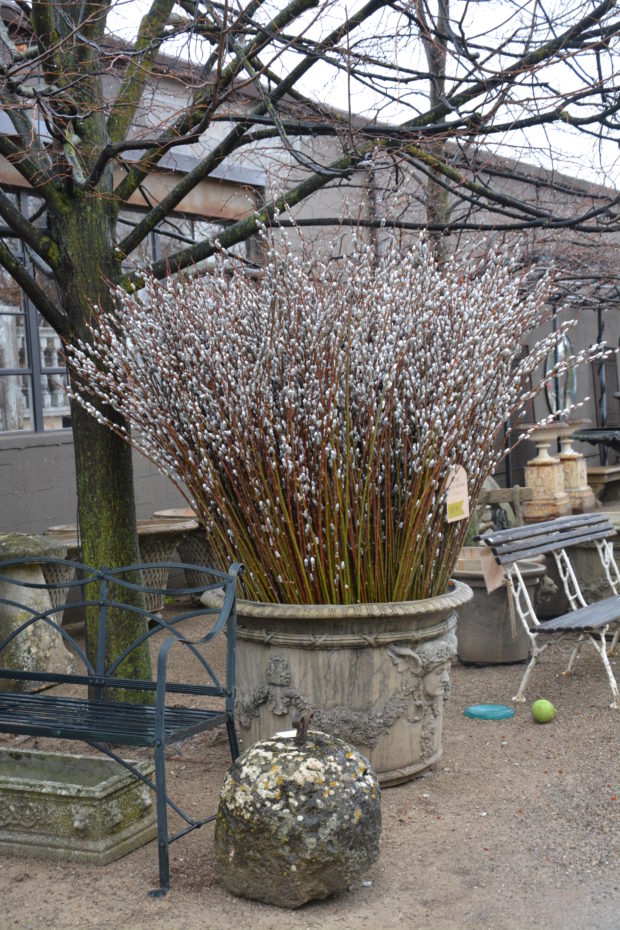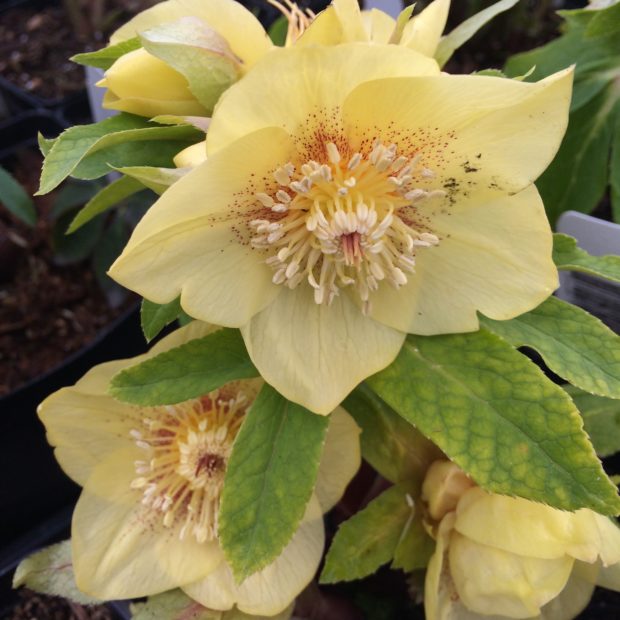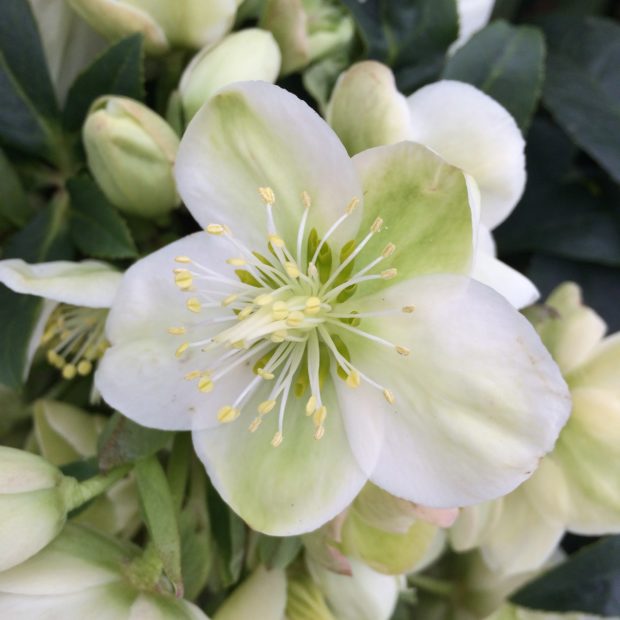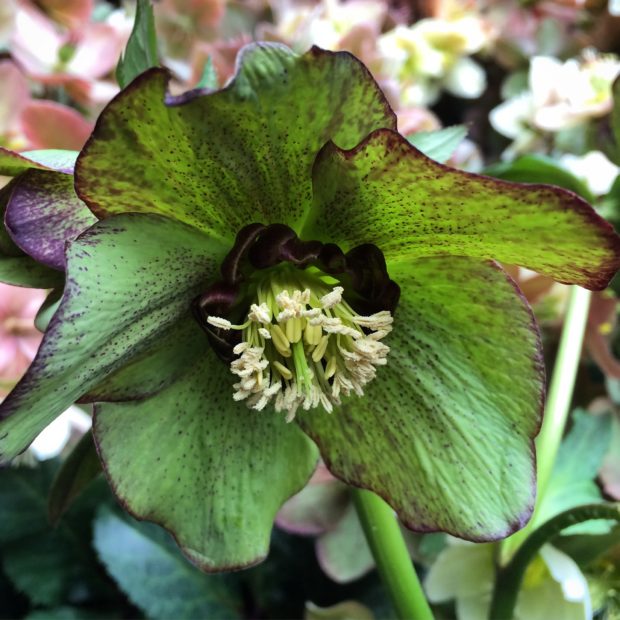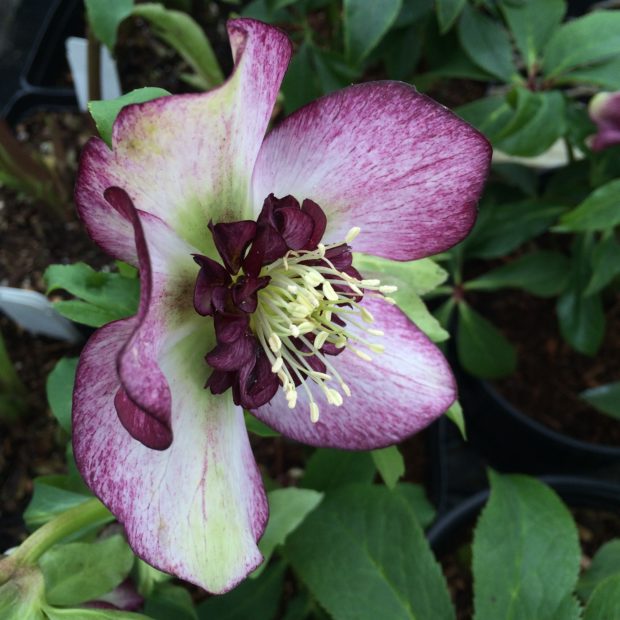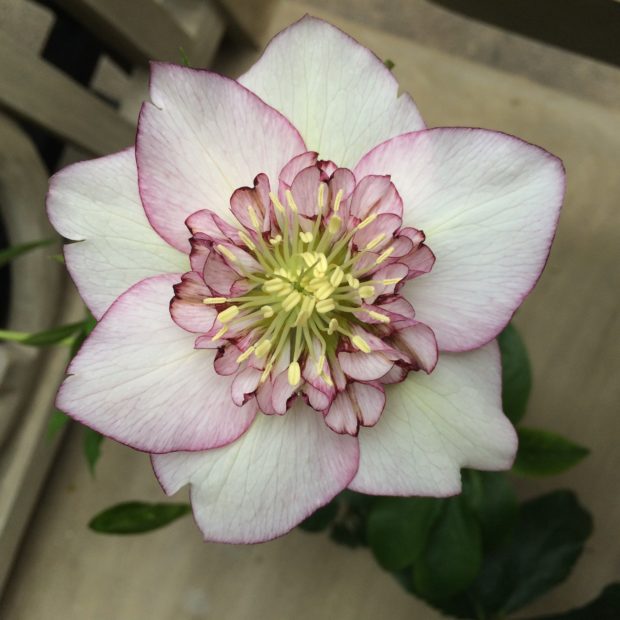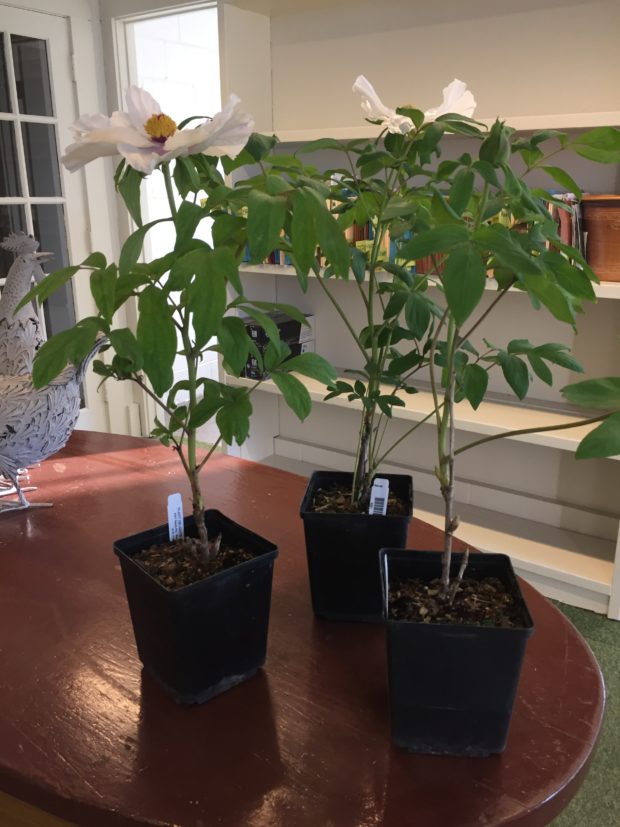 Our perennial plant specialist David G drove the sprinter to Pine Knot Farms to pick up a large order of hellebores for our March hellebore festival. I wrote about that trip last week. David is a very serious and enthusiastic hort head – this is just one of many reasons why he is a treasured member of our group. As soon as he knew the plan to go to Pine Knot Farms, he started talking about Plant Delights Nursery. Not that I wasn’t aware of Tony Avent. He is a highly respected grower who specializes in rare, native and otherwise interesting perennial plants. His catalogue is as readable and entertaining as it is loaded with information about those plants he loves and grows. I have never ordered from him, as the heyday of my perennial gardening was many years ago. David was very keen to go on from Pine Knot to Plant Delights. Why not? It was close by. The drive back to Michigan would be a long one. Once our hellebore order was picked up, he had the rest of the day available. He needed an overnight before the long drive home. He had ordered from them on line before, but what a hort treat it would be to visit in person. How could I not give him the go ahead?
Our perennial plant specialist David G drove the sprinter to Pine Knot Farms to pick up a large order of hellebores for our March hellebore festival. I wrote about that trip last week. David is a very serious and enthusiastic hort head – this is just one of many reasons why he is a treasured member of our group. As soon as he knew the plan to go to Pine Knot Farms, he started talking about Plant Delights Nursery. Not that I wasn’t aware of Tony Avent. He is a highly respected grower who specializes in rare, native and otherwise interesting perennial plants. His catalogue is as readable and entertaining as it is loaded with information about those plants he loves and grows. I have never ordered from him, as the heyday of my perennial gardening was many years ago. David was very keen to go on from Pine Knot to Plant Delights. Why not? It was close by. The drive back to Michigan would be a long one. Once our hellebore order was picked up, he had the rest of the day available. He needed an overnight before the long drive home. He had ordered from them on line before, but what a hort treat it would be to visit in person. How could I not give him the go ahead?
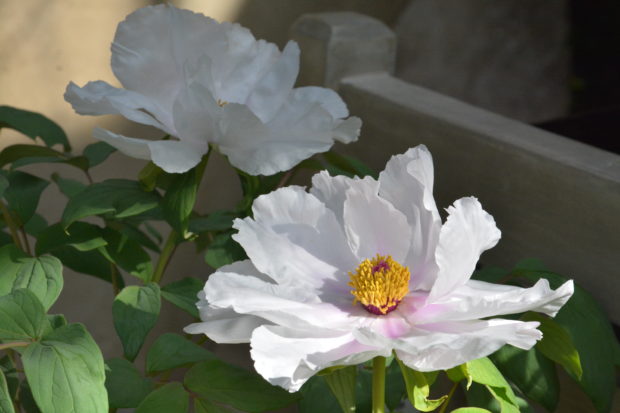 He did pester me regularly before his trip south about whether I was interested in him picking up any plants for me at Plant Delights. I shrugged off his question long enough to see him off. Once he was on the road, I read the catalogue from start to finish. The idea that he would be able to see the plants in person, and talk to me about them sounded great. Oh yes, I made a list. At the top of that list, a Chinese tree peony species, Paeonia Ostii. The catalogue description made it sound irresistible. A tree peony with a mature size of 4′-5′, that would have 100 white blooms or better at maturity-what gardener would not long to have one? Lurking in the background was the memory of the perennial gardens I cultivated in my late 20’s and my early 30’s, and how much I enjoyed them. As long as I was at it, 3 of these peonies sounded better than one. As long as I had the idea to dive in, why not dive deep? I was ready when David called. Did I have a mind to buy some plants? Yes, I did.
He did pester me regularly before his trip south about whether I was interested in him picking up any plants for me at Plant Delights. I shrugged off his question long enough to see him off. Once he was on the road, I read the catalogue from start to finish. The idea that he would be able to see the plants in person, and talk to me about them sounded great. Oh yes, I made a list. At the top of that list, a Chinese tree peony species, Paeonia Ostii. The catalogue description made it sound irresistible. A tree peony with a mature size of 4′-5′, that would have 100 white blooms or better at maturity-what gardener would not long to have one? Lurking in the background was the memory of the perennial gardens I cultivated in my late 20’s and my early 30’s, and how much I enjoyed them. As long as I was at it, 3 of these peonies sounded better than one. As long as I had the idea to dive in, why not dive deep? I was ready when David called. Did I have a mind to buy some plants? Yes, I did.
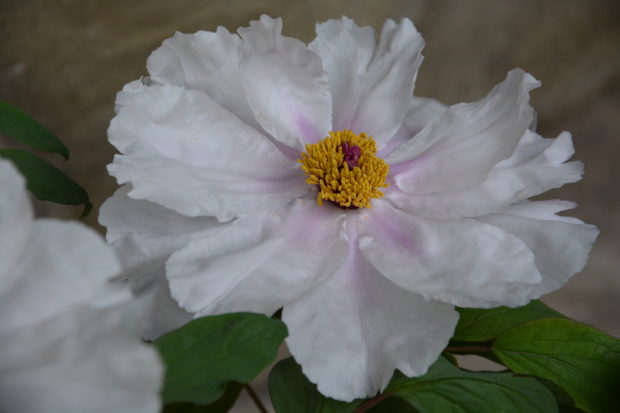 Subsequent to making a decision to speak for 3 of these peonies, of course I had to round out and beef up my order. None of my additional selections relate to each other. I just liked the sounds or the looks of them. Be advised that, unlike many other gardeners, I am not a plant collector. That is, until that moment David called me asking if there was anything else I wanted to add to those 3 peonies. Of course I did. It was a moment that might not come again anytime soon. I put together a collection. In my office now is a small collection of fabulous perennial plants from Plant Delights. Those paeonia ostii flowers that came in to bloom on David’s trip back were incredibly fragrant. My office was suffused with the perfume of this peony. Intoxicating that – the fragrance of that peony, and the arrival of some very special and interesting plants.
Subsequent to making a decision to speak for 3 of these peonies, of course I had to round out and beef up my order. None of my additional selections relate to each other. I just liked the sounds or the looks of them. Be advised that, unlike many other gardeners, I am not a plant collector. That is, until that moment David called me asking if there was anything else I wanted to add to those 3 peonies. Of course I did. It was a moment that might not come again anytime soon. I put together a collection. In my office now is a small collection of fabulous perennial plants from Plant Delights. Those paeonia ostii flowers that came in to bloom on David’s trip back were incredibly fragrant. My office was suffused with the perfume of this peony. Intoxicating that – the fragrance of that peony, and the arrival of some very special and interesting plants.
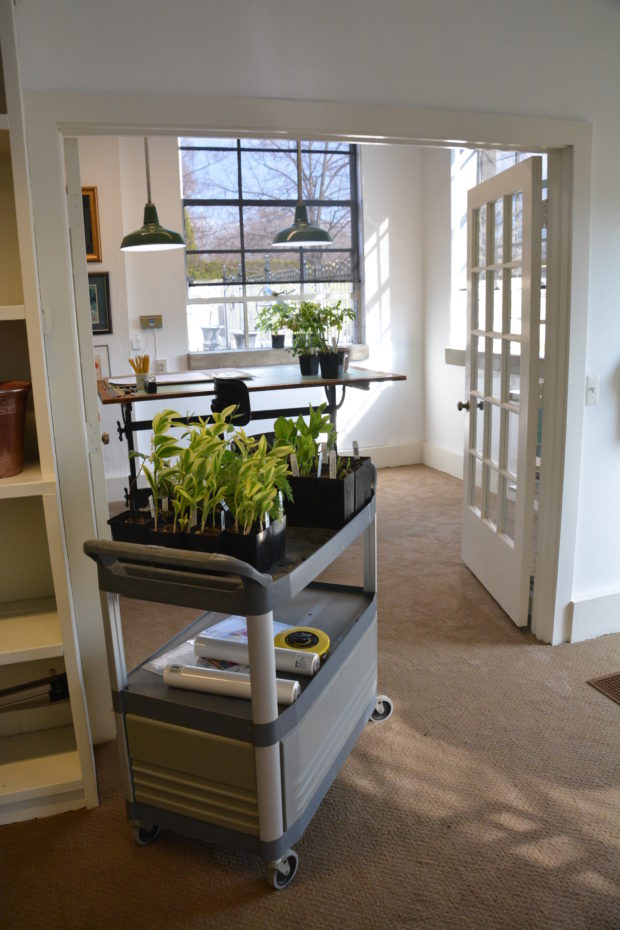 Some of the plants I spoke for were still dormant. I have 3 arisaema “Crossing Over” that I potted up that are just about to break ground. This jack in the pulpit will mature at 30″ tall. Other plants were in full bloom, given a run of warm weather in North Carolina. I knew David would look over every plant before he spoke for it. The two of us were having a really great time. He was shopping too. We shared a moment about plants that I will not soon forget. My stash of plants was not that big, but each and every one would be treasured. I have been keeping them in my drawing studio, as it has been much too wintry to plant them in the ground at home. To follow are some pictures of my choices.
Some of the plants I spoke for were still dormant. I have 3 arisaema “Crossing Over” that I potted up that are just about to break ground. This jack in the pulpit will mature at 30″ tall. Other plants were in full bloom, given a run of warm weather in North Carolina. I knew David would look over every plant before he spoke for it. The two of us were having a really great time. He was shopping too. We shared a moment about plants that I will not soon forget. My stash of plants was not that big, but each and every one would be treasured. I have been keeping them in my drawing studio, as it has been much too wintry to plant them in the ground at home. To follow are some pictures of my choices.
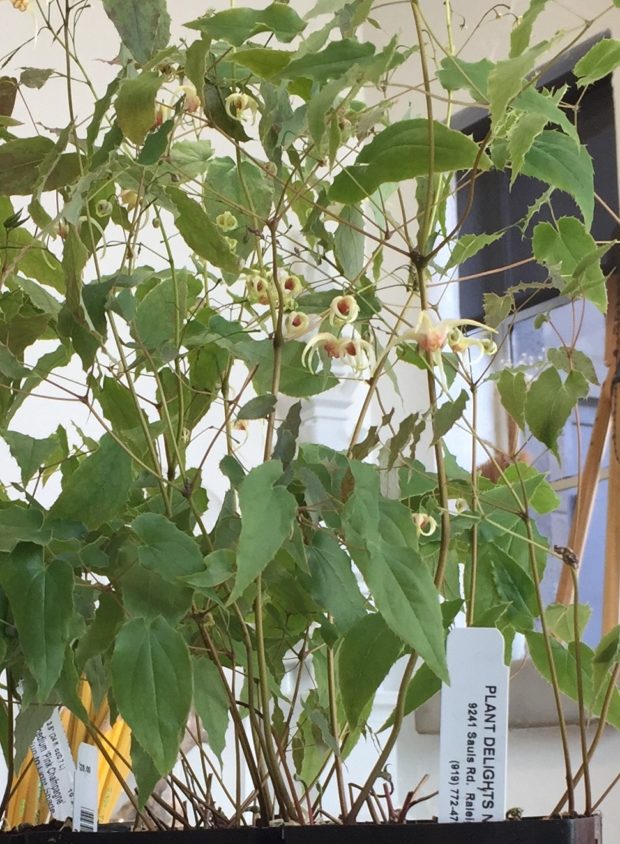 Epimediums tolerate dry shade. They do not increase in size fast, but each and every one of them is a treasure asking for a special place in a shade garden. The flowers of Epimedium “Pink Champagne” are extraordinarily beautiful.
Epimediums tolerate dry shade. They do not increase in size fast, but each and every one of them is a treasure asking for a special place in a shade garden. The flowers of Epimedium “Pink Champagne” are extraordinarily beautiful.
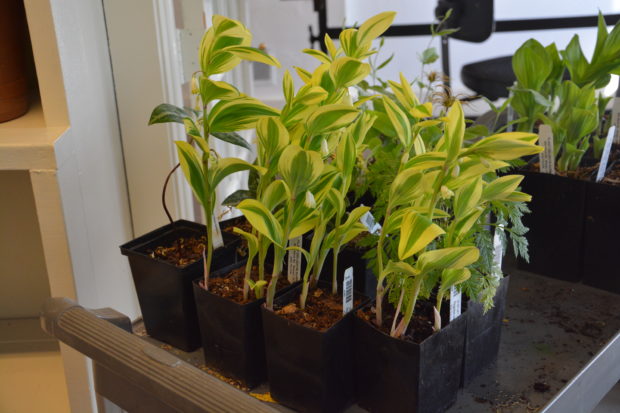 polygonatum odoratum “Angel Wing”. Solomon’s seal is a favorite shade plant. The variegation on this cultivar, which will eventually be white, is exceptional.
polygonatum odoratum “Angel Wing”. Solomon’s seal is a favorite shade plant. The variegation on this cultivar, which will eventually be white, is exceptional.
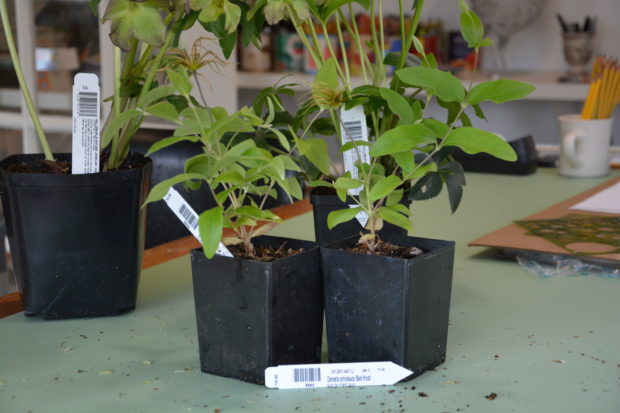 clematis ochroleuca “Bald Knob”, introduced by Plant Delights, is a shrubby clematis growing 15″ by 15″, and sports nodding white bells. Sounds good to me.
clematis ochroleuca “Bald Knob”, introduced by Plant Delights, is a shrubby clematis growing 15″ by 15″, and sports nodding white bells. Sounds good to me.
 adonis amurensis “Fukujukai” has gorgeous semi double yellow flowers in very early spring. I hope to have a flower or 2 next year.
adonis amurensis “Fukujukai” has gorgeous semi double yellow flowers in very early spring. I hope to have a flower or 2 next year.
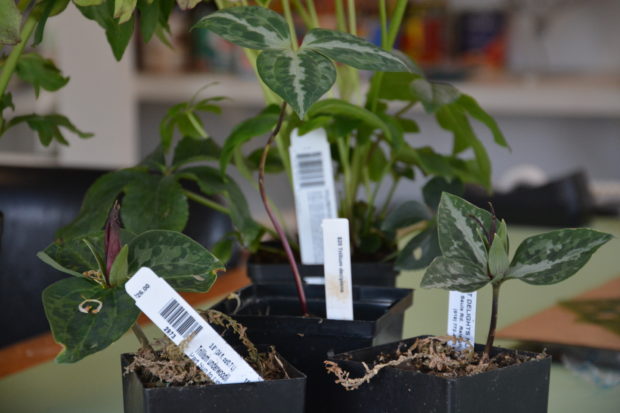 David did get me a trillium decipiens from John Lonsdale, who was showing and selling his plants at Pine Knot Farms. I added a pair of trillium underwoodii from Plant Delights.
David did get me a trillium decipiens from John Lonsdale, who was showing and selling his plants at Pine Knot Farms. I added a pair of trillium underwoodii from Plant Delights.
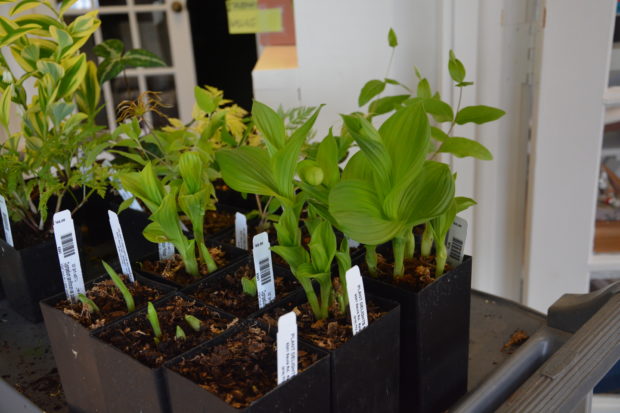 I did lose what little control I had when it came to the lady slipper orchids. I spoke for 5 Cypripedium “Phillip”, a hybrid of the native Michigan showy lady slipper orchid, cypepedium reginae. I have a memory of a field of them in bloom in an open sunny cedar bog in the upper peninsula of Michigan in June, some 35 years ago. A bouquet of them in a restaurant led me to purchase 3 clumps of them from a property owner near by. I had those plants for many years, and left them in place when I sold the house. To have them again in my garden sounds so good. One of these plants is due to bloom-I cannot wait. And of course there are 3 of the yellow lady slipper orchids-cypripedium parviflorum pubescens.
I did lose what little control I had when it came to the lady slipper orchids. I spoke for 5 Cypripedium “Phillip”, a hybrid of the native Michigan showy lady slipper orchid, cypepedium reginae. I have a memory of a field of them in bloom in an open sunny cedar bog in the upper peninsula of Michigan in June, some 35 years ago. A bouquet of them in a restaurant led me to purchase 3 clumps of them from a property owner near by. I had those plants for many years, and left them in place when I sold the house. To have them again in my garden sounds so good. One of these plants is due to bloom-I cannot wait. And of course there are 3 of the yellow lady slipper orchids-cypripedium parviflorum pubescens.
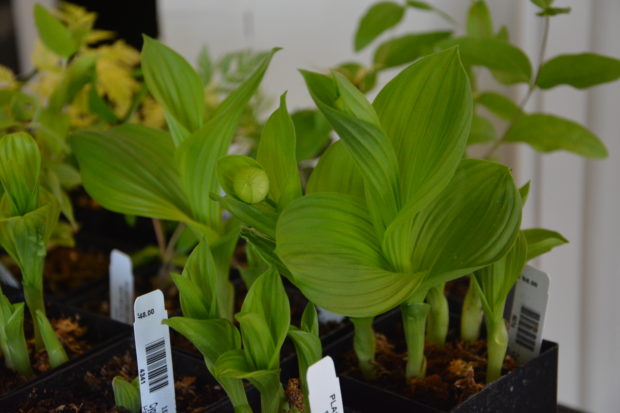 Now that I have these plants, where will I plant them? I have plans to change some areas in my landscape – not just for this group of perennial plants, but for these and more. We’ll see where this small foray into buying plants goes.
Now that I have these plants, where will I plant them? I have plans to change some areas in my landscape – not just for this group of perennial plants, but for these and more. We’ll see where this small foray into buying plants goes.
 Plant Delights Plan to be delighted.
Plant Delights Plan to be delighted.
